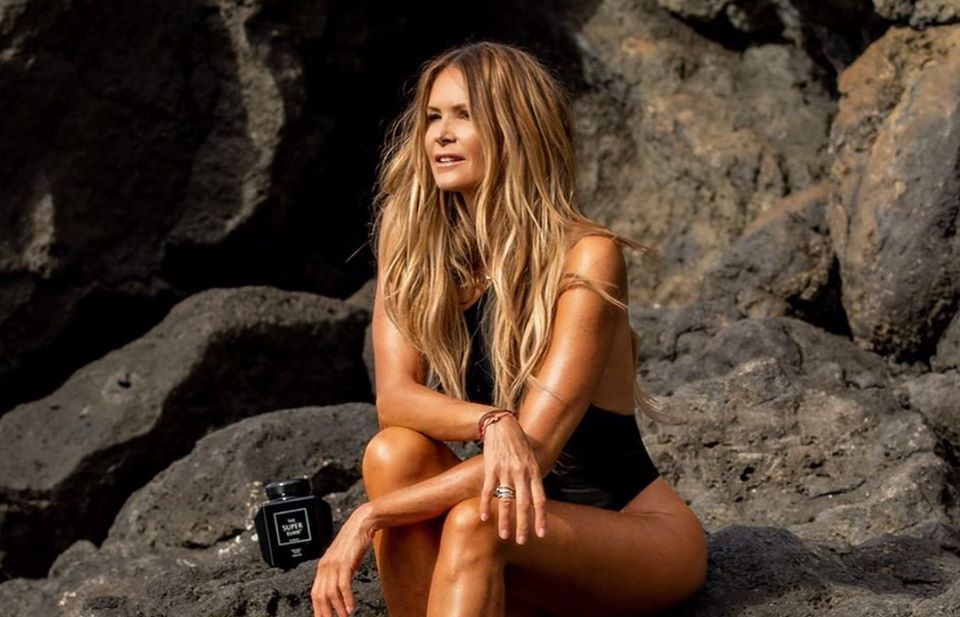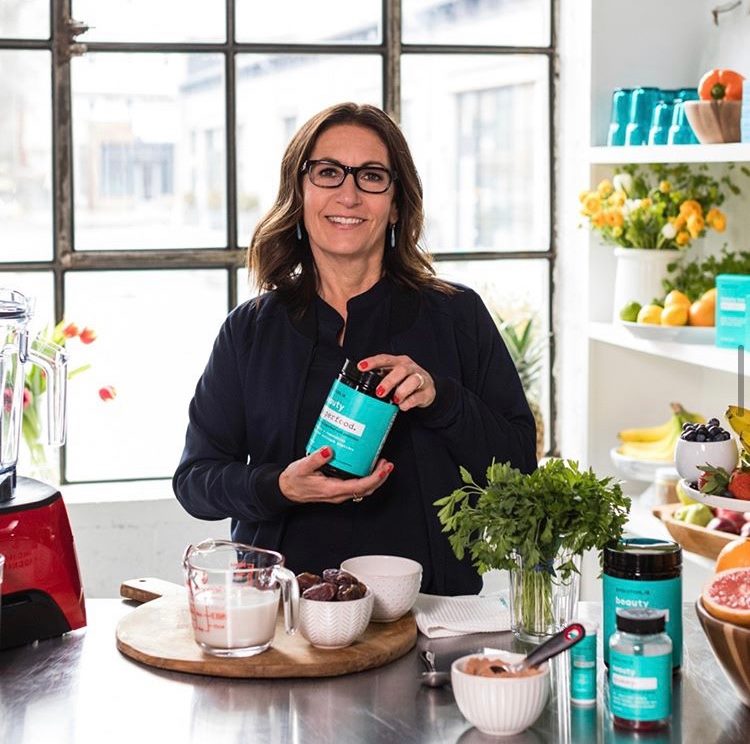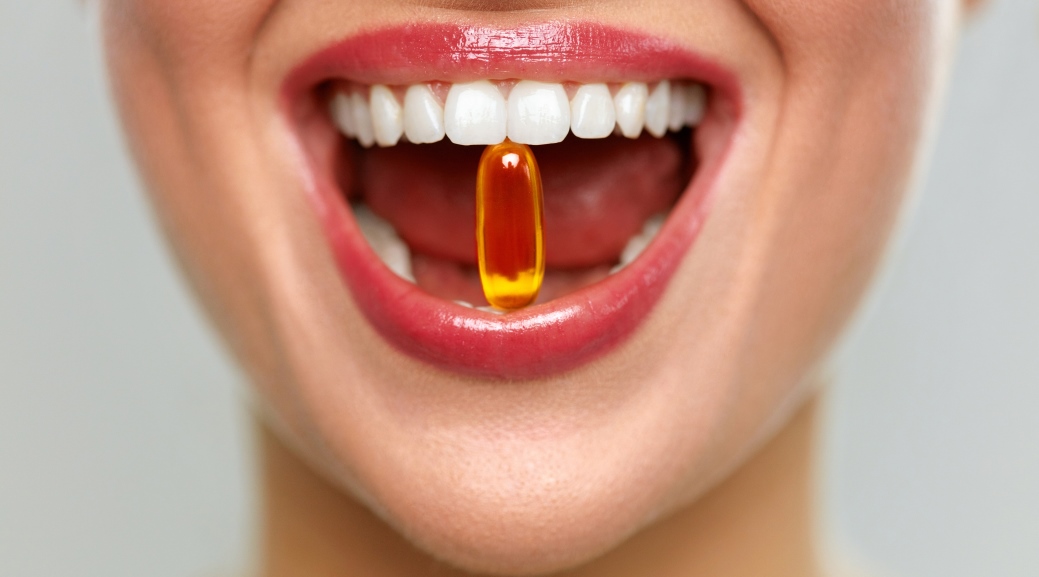Many trends are revived for each generation, especially if they meet a deep-seated need or want. Think of the explosive return of flat shoes after years of towering heels. The idea of beauty from within has thousands of years of history behind it across continents. Ten years ago, Japan accounted for 43 per cent of global beauty supplements sales, followed by China owing to age-old beliefs in Asian medicine.
Many career pharmacists remember Imedeen, the Swedish nutraceutical developed in the 1980s and spruiked by Kerri-Anne Kennerly, which is still the world’s number one anti-ageing skincare supplement. Health food stores have offered products with hair, skin and nail benefits for decades and many similar formulas lead the current supplement wave. With analysts predicting that the global beauty supplement market is on track to reach US$7.64 billion in the next five years, even mass retailers and supermarkets such as Aldi and Woolworths in Australia and Walmart and Target in the US have hitched their star to the new gold rush.

So, what’s changed over the past five to 10 years to elevate ingestible beauty supplements to a staple rather than a trend?
The Asia/Pacific market
The rise of Asian-influenced beauty and skincare products from Japan and South Korea has pulled beauty supplements along in its wake in Western markets. The Asia/Pacific market still accounts for the highest share of global revenues, led by Japan, China and South Korea. Online and in-store sales to customers of Asian heritage in Australia and the US have also fuelled beauty supplement sales in both countries.
Europe ranks second with 25 per cent of global sales, with the three major markets of Germany, France and the UK representing 20 per cent of total revenues. The US is catching up rapidly and experienced a 61 per cent rise in beauty supplement sales in 2018. According to Mintel, products with hair, skin and nails benefits accounted for 12 per cent of new beauty supplement launches last year, anti-ageing claims made up 4 per cent of launches and 3 per cent included both claims.
The spectacular growth of the US$4 trillion wellness industry has also been a major driver of growth. The US, the UK and Australia have long boasted major sales in alternative health supplements, with more than 8.3 million Australians buying vitamins and supplements reports Roy Morgan Research. More than 65 per cent purchase products from leading pharmacies such as Chemist Warehouse, Priceline and My Chemist and 27 per cent buy them from supermarkets. A market dominance that has carried over into beauty supplements.
Overseas and in Australia, specialist chains like Sephora and department stores have also led to a new market positioning alongside skincare and makeup. The all-pervasive wellness trend has made more people health-conscious, and increasing stress levels, especially among young Australians, have spurred consumers to look for products that will not only help their bodies to cope, but also to enhance their appearance. This more holistic attitude to beauty combines skincare products with a well-balanced diet, injectables like fillers and Botox and supplements for an all-round beauty routine.

Online and social
The Internet, particularly Instagram, has also been instrumental in boosting beauty supplement sales. There has been an explosion of information, celebrity endorsements and positive consumer reviews online and through social media. Gwyneth Paltrow has launched a supplement called Goopgenes through her lifestyle website Goop, for example, and SugarBearHair gummies are promoted by the Kardashian-Jenner clan. Australian supermodel Elle Macpherson has also enjoyed success in Australia and the US with her WelleCo Super Elixir. In 2017, Mintel reported that 47 per cent of young American women aged 18 to 34 had used an oral supplement with appearance-enhancing claims.
Online sales have dramatically boosted vitamin and beauty supplement sales from Alibaba’s Singles’ Day, the world’s biggest shopping event, to everyday e-commerce. According to Nielsen’s 2018 trend report on health and wellness, 24 per cent of US vitamin and supplement sales occur online. A development that has produced more eye-catching packaging, designs and names, which are also Instagram-worthy to further boost sales.
According to Eric Ryan, co-founder of Olly Nutrition, which was recently bought by Unilever, the design and storytelling around beauty supplements is much more approachable today. The brand has bright packaging with a smiley face, designed to be displayed not hidden away in a drawer or cabinet, and is clearly aimed at Millennials and Gen Zers. “We created something that was full of optimism because that’s why you bought these products – to feel better about yourself”.
Olly sells a product called Restful Sleep, instead of relying on its main ingredient – the hormone melatonin – to make its pitch. An approach that has become a major trend in beauty supplements to tout benefits rather than rely on ingredients that consumers might not be aware of. Many Australian and American companies such as The Beauty Chef and Vida Glow have products such as Body Inner Beauty Powder and Beauty Protein Chocolate. Sephora stocks a brand called Hum which offers digestion-focused products such as Flatter Me and a skin and hair supplement named Red Carpet.
Gen Xers and Baby Boomers
Millennials aren’t the only demographic boosting sales. Way back in the early Noughties when Japan accounted for nearly half the world’s sales of beauty supplements, Baby Boomers were deemed to be key to their future in Western markets. L’Oréal and Nestle launched Inneov in 2002, a supplement designed to make beauty from within a mainstream routine. But it failed to fire and the two multinationals shuttered the brand in 2014. The acquisition of Olly isn’t the first time Unilever has tried to enter the supplements market through weight loss products and energy drinks.
This time round, though, the over-50s represent more than 40 per cent of the population in Australia and close to half a billion Chinese people are also aged 50-plus. The 36 year one-child policy in China led to huge improvements in health care and, just like their Western counterparts, Chinese people now live longer and want to age well.

Gen Xers and Baby Boomers have become some of the biggest users of beauty supplements in major markets for obvious reasons. They are most in need of a boost to skin radiance and hydration and solutions for thinning hair and brittle nails. The standard-bearer for over-40s beauty, Bobbi Brown, has stepped away from her eponymous makeup brand owned by Estée Lauder Companies, launching her own wellness line in the US – Evolution_18. “I have always been a health nut and I truly believe that so much of beauty is how healthy you are”.
She is not alone in her belief. Ageing well now means more than staying out of the sun and following a good diet, which has led to a wide array of gummies, powders, liquids, drinks and more in the supplement category that are quick and easy-to-take. The fortification of hair, skin and nails remains a cornerstone of the category as benefits, which are just as appealing to young mothers in their 20s and 30s as they are to the over-60s. The major reason why the hottest category in beauty supplements is collagen.
Originating in Japan, where collagen powder is offered in restaurants to sprinkle over noodles, and collagen creamers for coffee are commonplace, the link is easy to understand. Collagen is the main structural protein in the skin that keeps it plump and line-free, but it diminishes with age. So, taking collagen in powder, liquid, pill or capsule form is meant to replenish the body’s natural supply to fortify hair, skin and nails. There are two main types on the market – marine collagen from fish and animal collagen. Anecdotal evidence and many consumer reviews are very positive about the value of taking collagen, but overall doctors remain cautious about endorsing its benefits.

That hasn’t stopped US celebrity dermatologists such as Dr Nicholas Perricone and skincare ranges like Unilever-owned Dr Murad from releasing their own brand supplements. Although supplements aren’t regulated like medicines, there is some scientific proof that they are beneficial. Antioxidants support heart health and improve the skin, for example, Omega-3 fatty acids increase cell renewal and may help to protect the skin against sun exposure.
Chemists, drugstores and pharmacies are expected to remain major contributors to the revenues of the beauty supplement market worldwide, which benefits consumers because of access to one-on-one advice. Consumers are unlikely to get into trouble taking one supplement, but too many can open them up to risks. The future of the beauty supplement market looks bright because of the wellness link and as research and technology improve, the most successful brands will offer sophistication and increased therapeutic benefits in more convenient formulas.
This article is featured in the Jan/Feb/Mar issue of esprit.

